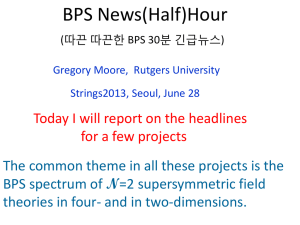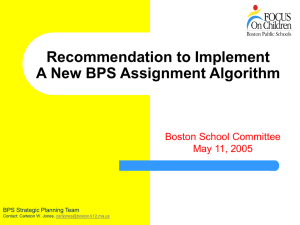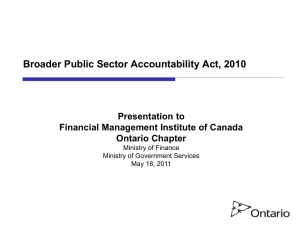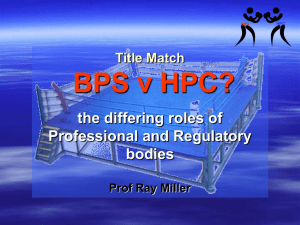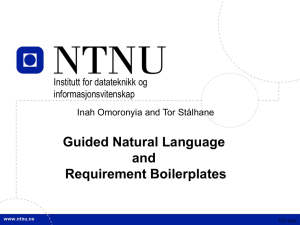Trican`s Burst Port System (BPS)
advertisement
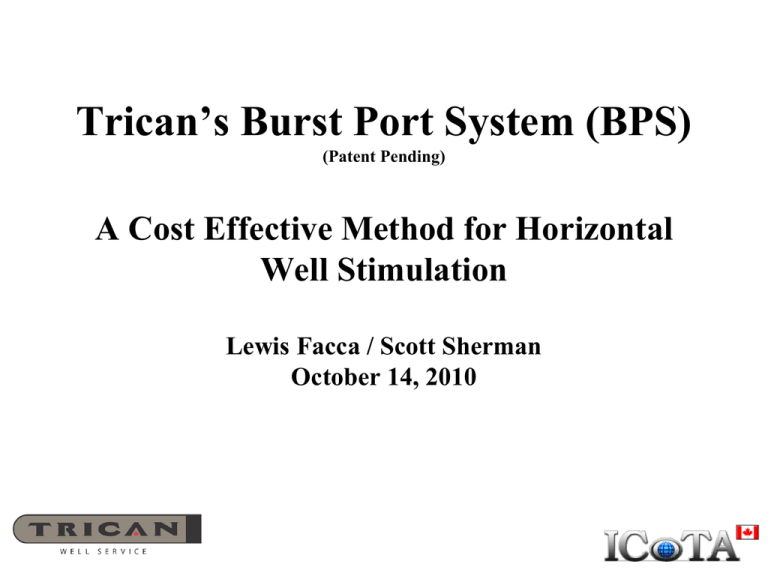
Trican’s Burst Port System (BPS) (Patent Pending) A Cost Effective Method for Horizontal Well Stimulation Lewis Facca / Scott Sherman October 14, 2010 Review of Existing Methods for Horizontal Fracturing - Plug and Perforate (non continuous operation) - Open hole packers with ball operated sliding sleeves - Pre-perforated wellbore with CT conveyed fracturing BHA - Mongoose system Trican’s Approach Trican’s Burst Port System (BPS) was developed as an alternative method for multi stage stimulation of horizontal wells. The system was developed to give customers a simple, cost effective solution to existing technologies. Trican’s Approach Why develop another method? A strong market demand existed to: - Eliminate expensive and time consuming drill outs of frac ports - Eliminate time spent sand jetting perforations - Eliminate issues associated with pre-perforated wellbores - Increase the amount of fracturing treatments possible in a wellbore - Find alternatives to Mongoose license limitations BPS Development - Concept was conceived when Trican was brainstorming approaches to place multiple fractures in a horizontal leg. - Improvements in horizontal coil tubing fracturing techniques and tools made CT fracturing at these depths possible - Concept was brought to the table again as a means to eliminate perforating when working in countries that have stringent explosive requirements - Shallow horizontal completions in the Western Canadian Sedimentary Basin increased dramatically in the past two years - These shallow completions demanded a simple, low cost alternative to existing multiple stimulation techniques Typical BPS Collar Configuration - Frac Ports / Collar: 10 - 15 - Burst pressures: 26 – 80 MPa BPS Installation Process - BPS collars are installed by Trican’s Technical Specialists between casing joints as part of the completion string - Production casing run to surface or hung off of a liner hanger - Completion cemented in place (open hole packers are a more costly alternative) - Rig moves off location BPS Stimulation Process 1. 2. 3. 4. 5. Scraper run with service rig or CT unit CT unit runs into the toe of the well with selective stimulation BHA BHA is placed across the first BPS collar to be treated Stimulation is pumped down 83mm (3.25”) coil tubing Flush coil tubing and pull to next zone & repeat steps 3-5 BPS Stimulation BHA Release Tool Bow Spring Centralizer Packer Cups Slot Sub Mechanical CCL Benefits of BPS Installation: - BPS collars slide into tight, deviated wellbores where completions with open hole packers cannot - Fast installation process - Cementing casing is inexpensive compared to openhole packers - Liner hangers or monobore completions are possible Benefits of BPS cont’d Stimulation: - Sand off? No problem! - Clean up coil by reverse circulating - No open perforations above BHA, so clean up is easy - Pull to the next BPS collar and continue treating - Can install “back up” collars if sand offs are anticipated - Customers can be aggressive with sand ramps and experiment with fracturing treatments because sand offs are easy to clean up - Can install as many frac ports as you want - Fast treatments, 200 tons, 20 zones, less than 24 hours on location Benefits of BPS cont’d Other Factors: - Down hole memory gauges provide important treatment data - Wellbore is left full drift, making future workovers and cleanouts easier - Extra collars can be installed for future stimulation - Collars can be skipped of they are deemed to be out of zone - Ports can be easily abandoned individually if a frac breaks out of zone First Installation July 1, 2009 Installation: - Southern Saskatchewan - Open Hole with swellable packers - Viking formation - 114.4mm, 17.26kg/m casing - TVD: 688m - TMD: 1306m - 10 BPS collars installed Stimulation: - 1600m of 73mm CT - 9 BPS collars treated (Packer leak) - Sand placed - 9 tonne (50/140) - 13 tonne (12/20) - 110 tonne (16/30) First Cemented Install Sept 17, 2009 Installation: - Fort Saskatchewan, Alberta -Viking formation - 114.4mm, 17.26kg/m casing - TVD: 860m - TMD: 1527m - 14 BPS collars installed Stimulation: -1916m of 82.6mm CT -14 BPS collars treated - Sand placed - 6.5 tonne (20/40) - 123 tonne (12/20) Typical Cemented BPS Frac BPS Statistics Since July 1, 2009 - Installed and stimulated over 80 wells - Installed over 1300 BPS collars - Cemented & Open Hole Systems with Swellable Packers - Formations: Viking, Cardium, Bakken, Colorado, Glauconite, Fish Scales, Montney Notable BPS Installs - Most zones in a single wellbore 31 frac ports installed & all were frac’d 160 tonne sand 30-60m (100-200 feet) interval spacing - Deepest Install TVD: 2,200m (7220 feet) TMD: 4,450m (14600 feet) Summary - Another method for horizontal well stimulation has been developed - BPS is cost effective method for multiple stimulations in a single wellbore - The job data collected over the last year proves that BPS is a sustainable multizonal completion technique What do you think?

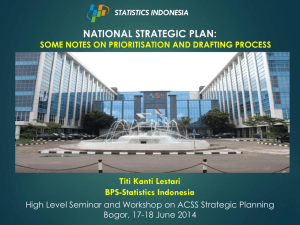

![[Presentation Subject]](http://s2.studylib.net/store/data/005556214_2-3281039b7fcba92b84bbeccb43b98ca1-300x300.png)
